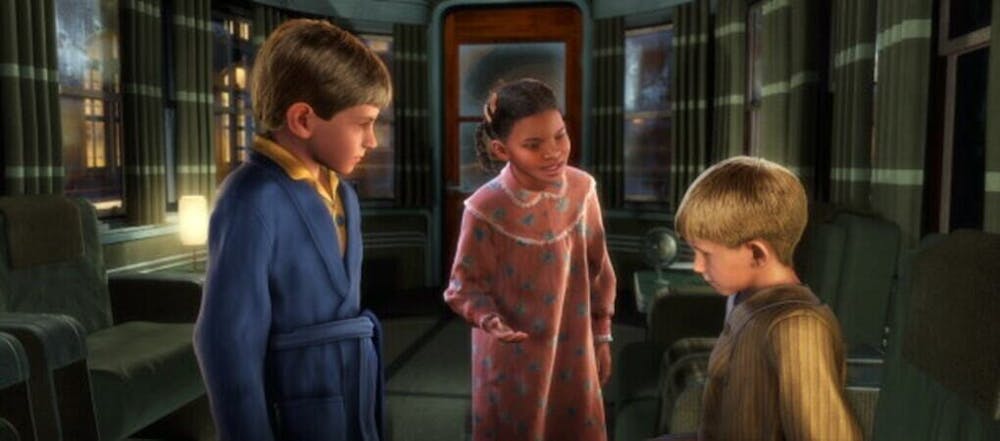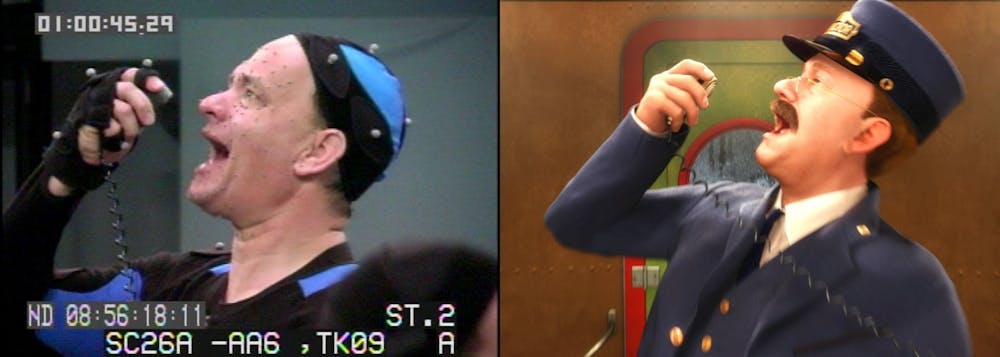Remember, if you can, what the holidays used to be like in school when you were young. Teachers took the time to make the season feel special. For me, they gave us apple cider, and we made paper chains and snowflakes to decorate the classroom.
But on the day before the winter break — pajama day — in 2005, our teacher gave us hot cocoa and rolled out a CRT TV. I clearly remember a DVD menu on the screen with a giant Christmas tree surrounded by elves dressed in red, a black train circling it every few seconds.
I don’t know why watching “The Polar Express” was so special for me.
Years later, I watched the film again, and while I still had fun, It wasn’t nearly as magical. It’s time to take off the rose-tinted glasses and give “The Polar Express” a critical look.

You might not know that “The Polar Express” is based on a book by Chris Van Allsburg. It’s a good one too — it won the Caldecott Medal in 1986 — but it isn’t exactly a good foundation for a feature-length film.
Why, you might ask? Because “The Polar Express” is a 32-page-long children’s book with words on only half of those pages. So how does the adaptation manage to fill more than an hour and a half of screen time with a 20-minute read? Groundbreaking technology and Tom Hanks.
It was the first movie to be filmed entirely with motion capture, a technology recently coming to popularity in 1999 with “Star Wars: Episode 1,” which featured Jar-Jar Binks — a character created using motion capture — and then in 2002 with “The Lord of The Rings: The Two Towers,” which featured Gollum — another fully mo-cap character.
But this was an entirely different beast. Rather than inserting a computer-generated creature into a live-action film, this film was fully computer generated and on top of that, going for semi-photorealism to match the book’s art style.

Tom Hanks does motion capture for the conductor — one of his six characters. Photo from The Byrd Theatre.
The use of mo-cap created opportunities for techniques never before seen. It allowed for characters to be inserted into mind-blowing vistas. It allowed Tom Hanks to play six distinct characters. It allowed for camera angles to be changed after the shooting was already finished. After all, mo-cap only really captures movement data from actors.
But mo-cap, while groundbreaking from a technological standpoint, didn’t mean that it would appeal to general audiences off the bat. Actually, it kinda scared some people. Audiences and critics claimed that the characters looked dead in the eyes or zombie-like. It’s often used as a case study for the “uncanny valley” effect.
Rest assured, it’s still creepy. Though the VFX team decided not to render changing pupil sizes in the characters’ eyes, they decided to render the texture on top of them, which makes their eyes look glassy, and — simply put — dead.
Then, it’s obvious that “The Polar Express” can’t rely on its technology to wow audiences like “Avatar,” and it doesn’t make up for it with storytelling. It’s not written particularly interestingly, but that’s mostly because the movie’s focus is typically on fantastical set-pieces — well, one set-piece, really — the Polar Express itself.
Throughout the movie, characters cling to the train as it speeds past mountains, ride atop it in skis as they head toward a particularly terrifying tunnel, and hang on as it slides across a frozen lake. It’s the movie equivalent of a 3D rollercoaster ride at Universal Studios, but it’s still fun to watch.
The plot surrounding the train isn’t anything special, though. The film’s moment-to-moment plot points serve no purpose other than to lead us to another crazy action sequence. The overarching plot is about rekindling the hero’s Christmas spirit.
At the beginning of the film, the nameless hero boy, voiced by Daryl Sabara with motion capture by Josh Hutcherson, starts to not believe in Santa. The Polar Express and its conductor, played by Tom Hanks, pick him up to take him to the north pole to meet Santa and rekindle his spirit. He meets new friends on his way to the arctic, and his perspective on the holiday spirit changes along the way.
It’s a classic holiday story broken up by dazzling spectacles throughout. “The Polar Express” isn’t trying to be a groundbreaking story or change your life, it’s just meant to be a fun watch to get you into the holiday spirit, and it fulfills that task.
It has issues, and its rendering style didn’t hold up even when it came out, but I think it’s still worth a watch.
Final Score: 7.5 out of 10


